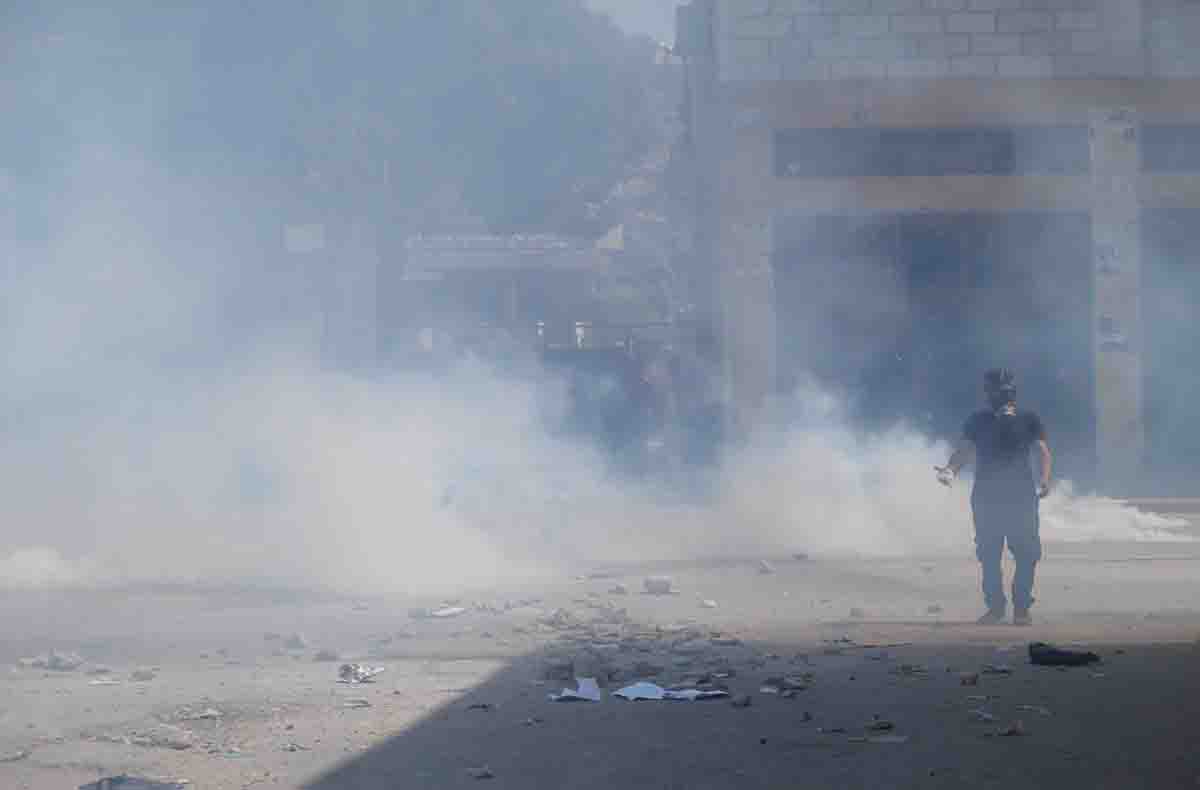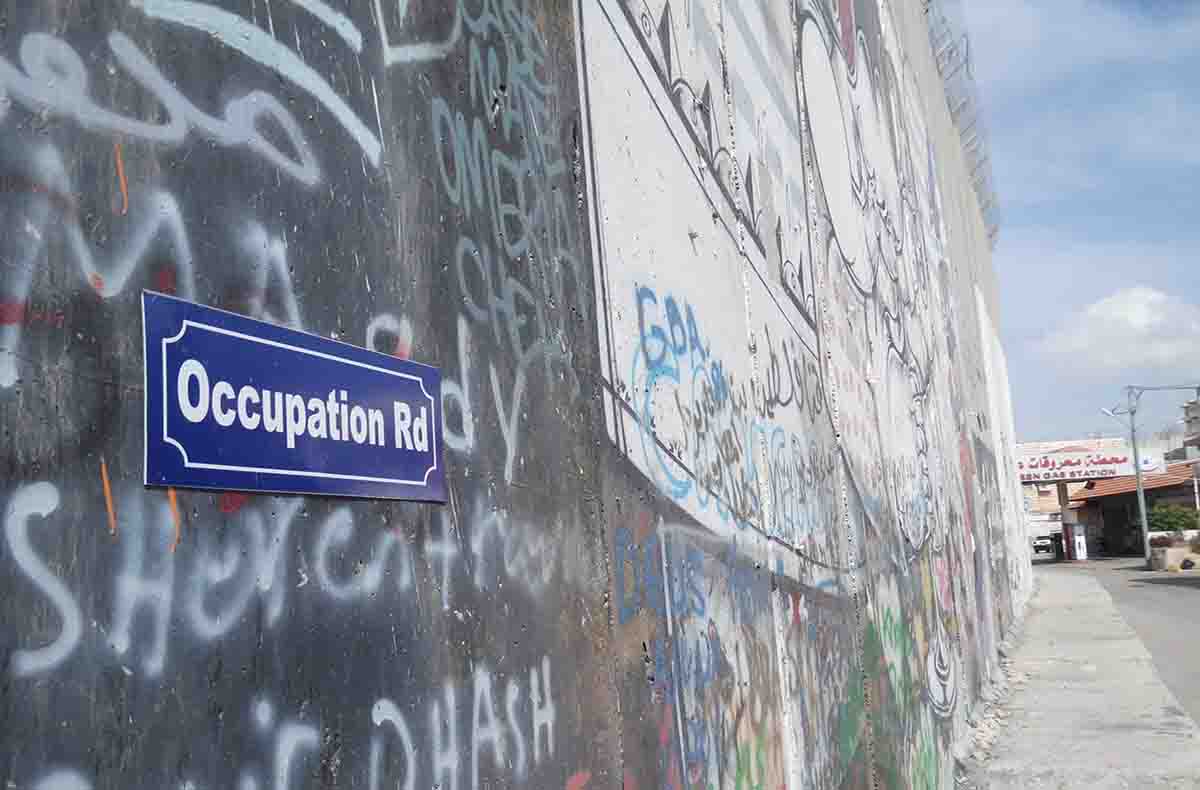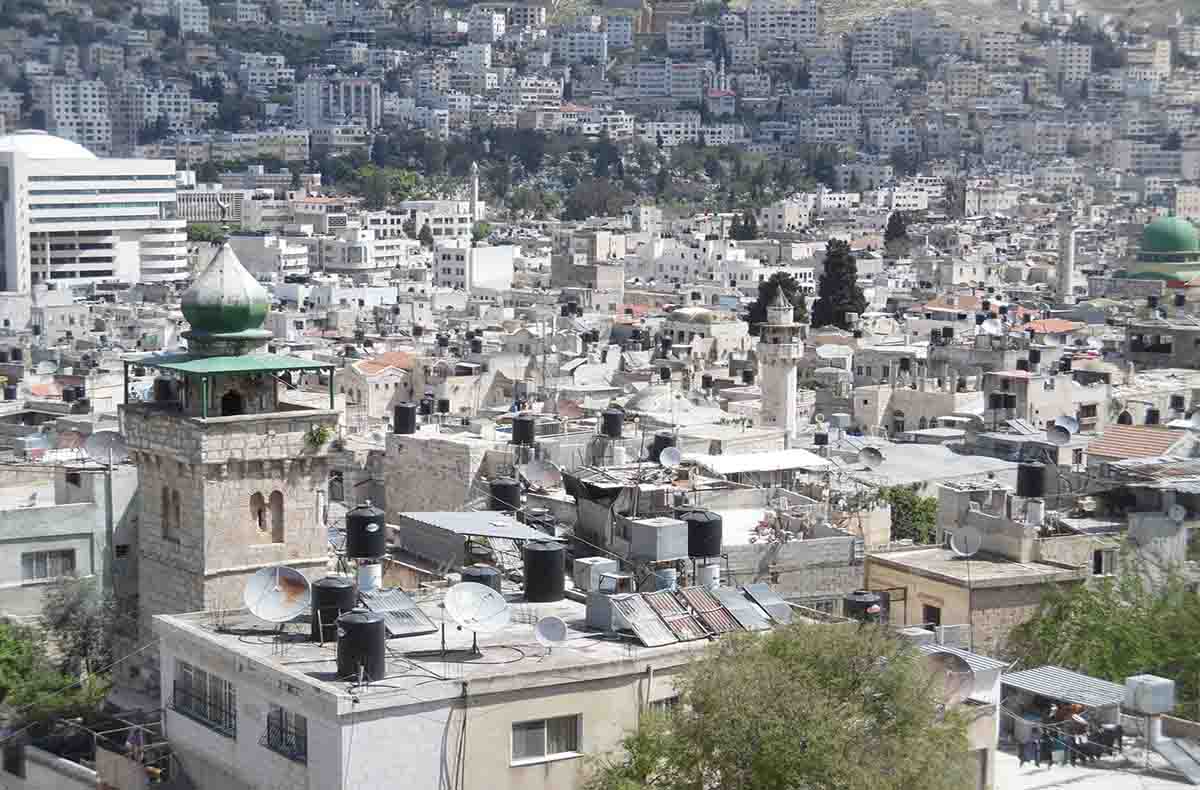
Photo by Sarah Edgecumbe
During my time in Palestine from 2016–2017, I attended several demonstrations against the ongoing Israeli occupation of Palestine.
These demonstrations were consistently characterized by excessive and disproportionate force on the part of the Israeli Occupying Forces (IOF), who relied heavily on obscene amounts of tear gas, indiscriminate use of rubber bullets, and at times, live ammunition to subdue grown men either praying or standing peacefully or teenage boys hurling stones.
Demonstrations were predominantly attended by teenage boys and men of varying ages—the only Palestinian women present were often medical staff tending to the wounded in ambulances.
The absence of women at these demonstrations, however, should not be interpreted as disengagement from Palestinian resistance more generally. Attendance of demonstrations at clash points such as IOF checkpoints constitute just a small, and disproportionately visible element of the Palestinian resistance movement.
For example, my friend Maya from Nablus, whom I introduced in part one of this series, described her ongoing role in the face of Israeli aggression and occupation in this way:
A woman in the Palestinian community is considered the most important member of a family. Whether she is a mother, wife, grandmother, sister, or whatever, her position is always clear. Women hold families together and hence hold communities together. As a mother of a boy and now expecting a girl, I will always arm my children with the power to reject this occupation and the bad practices it makes even when it becomes very recurrent. My job is to stop the normalization and the acceptance of the killing, kidnapping, arresting, and terrorism; at least in my children’s eyes. They should always believe in their rights as any other human being in any place in the world, and that they deserve a better reality that is free from the Israeli occupation.
The role Maya plays in resisting the Israeli occupation is likely mirrored by the majority of women across Palestine, regardless of religion or social background. (I once chatted with a Palestinian Christian woman in Bethlehem who supported Hamas due to her belief that they were both the least corrupt and Palestine’s best hope of ending the occupation—the conflation of Palestinian resistance with Islam is misguided and overlooks the contributions of Palestinian Christians during the intifadas.)
Women also consciously form connections, building networks devoid of hierarchy that cross lines of class and political affiliation and are dynamic enough to rapidly adapt and respond when the need arises. The role the women of Nablus played during the second intifada illustrates this.
Zeinab is a highly educated businesswoman who was a resistance organizer during the second intifada and the Israeli invasion of Nablus. She explained that women from Nablus “have historically attained a high level of education and held administrative office.
For years, women have held discussion receptions in each other’s houses where they gather to discuss politics, society, problems the community is facing and strategize as to how women can help alleviate social problems whilst resisting the occupation.”
According to Zeinab, when residents of Nablus’ old city realized an Israeli attack was imminent, both men and women worked together to prepare the community. She stated that men and women taught families how to preserve food and administered first aid training.
Medical, arms, and food caches were strategically placed around the old city, and volunteers were divided into two teams: medical and rebuilding. Both teams consisted of men and women. The rebuilding team would follow the IOF as they destroyed people’s homes, patching them back together as best they could. Sometimes the same doors and windows would be fixed three times a day.
During this period, there was no time to ask for orders. Women therefore became leaders, ready to think and act immediately wherever required.
From this well-structured grassroots resistance, Zeinab emerged as an organizer and leader throughout the Israeli attacks on the old city. But she has paid a high price for her prominent role within the resistance. In an occupied country where freedom of movement is already extremely restricted, Zeinab is now confined to Nablus.
Shortly after the second intifada, she visited Ramallah, a city forty-five minutes away. The IOF recognized her during her return journey and kept her at a checkpoint for six hours in an attempt to prevent her from re-entering Nablus.
During a shift change, Zeinab took the opportunity to run, fearing for her life as she did. Due to the intensity of the situation and the terror she felt, Zeinab now never leaves Nablus. Instead, she has continued her resistance at the community level, from within a women’s center she founded.
Zeinab’s center has trained women in beauty and cooking, helping them to establish their own businesses. This emphasis on assisting women in establishing micro-businesses originates from the Israeli invasion of Nablus during the second intifada. During the invasion of the old city, it was often too dangerous for Palestinian men to leave their homes. Women realized that they must step in to replace the men as the providers for the family.
“Women started to work from home making food and handicrafts to sell, printing and holding education classes. It was women who thought of these initiatives and women who implemented them.” In this respect, gender roles were reversed during the time of the invasion, and families which may have favored a more traditional domestic structure before the second intifada, now often perceive these roles differently.
When Zeinab and I spoke back in 2017, the women’s center had twenty-two volunteers who made a conscious effort to include women from surrounding villages in their work.
These village women came and cooked with the women from Nablus. Through conversations the women had while cooking, they were able to explore other areas of the West Bank and piece together their communal history: a history obstructed by checkpoints and prohibition on movement imposed by the Israeli occupation. (The center is still thriving today—though for the safety of its volunteers, I’m keeping out more specific or identifying details.)
Zeinab believes that “women realize that it is not enough for women [to focus only on women]—the whole family must be given attention.” In addition to helping women establish micro-businesses, her women’s center organizes summer and winter camps for local children and provides school materials for the most impoverished families.
Zeinab argues there is a need for “more people from Nablus to learn about other methods of resistance than fighting.” She believes that “Palestine needs speakers as well as fighters.”
Maya agrees, but also recognizes the importance of effective women’s solidarity. “The Palestinian community is a peaceful one in general. We are raised to accept people from different religious or ethnic backgrounds. Women have this magical bond that brings them together anywhere in the world. Palestinian women are definitely givers, we are always there for each other regardless of our differences.”


